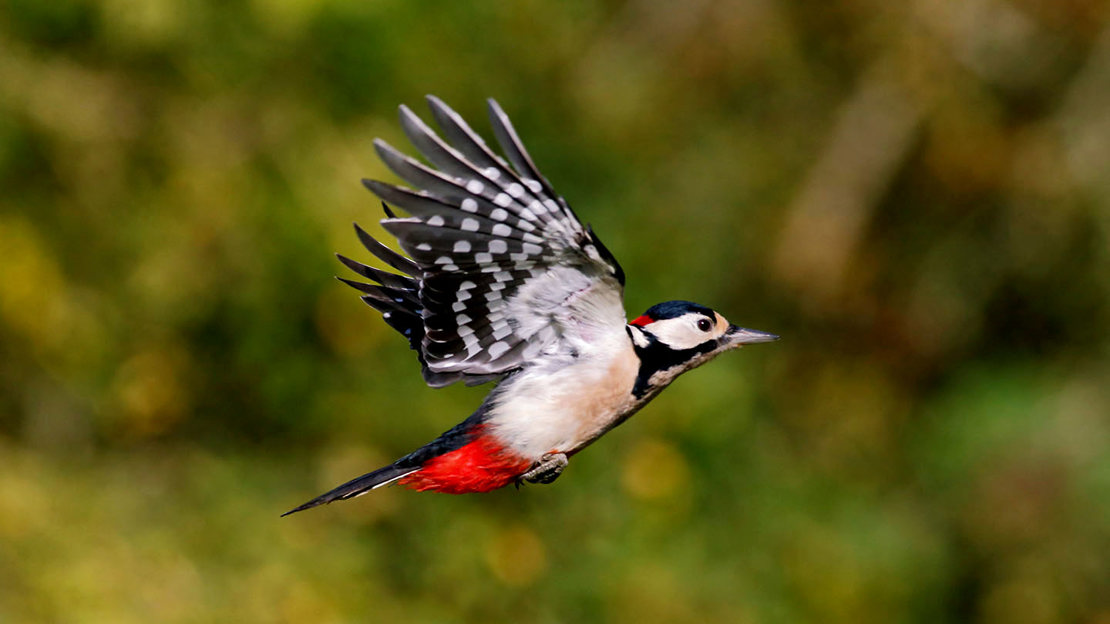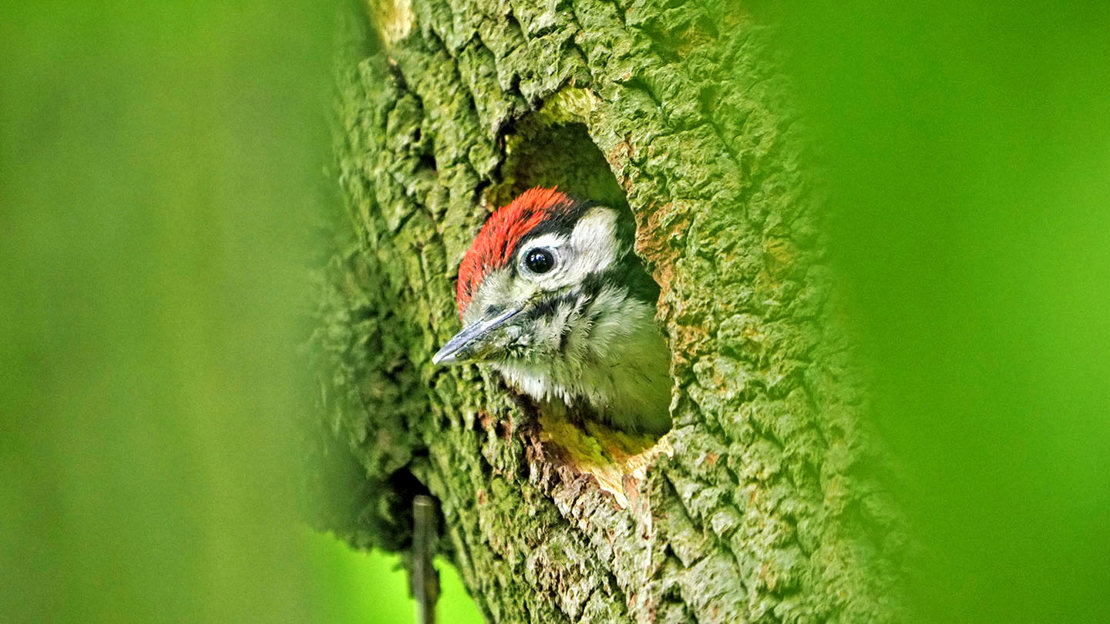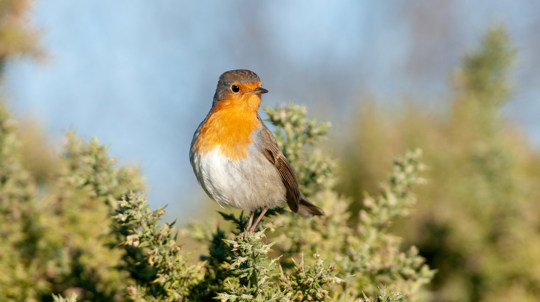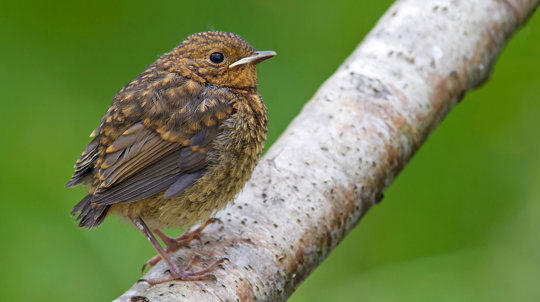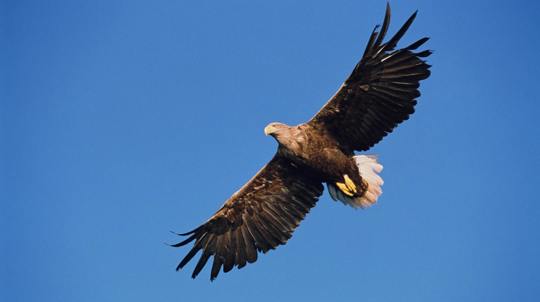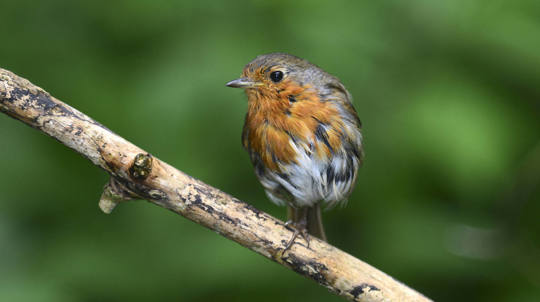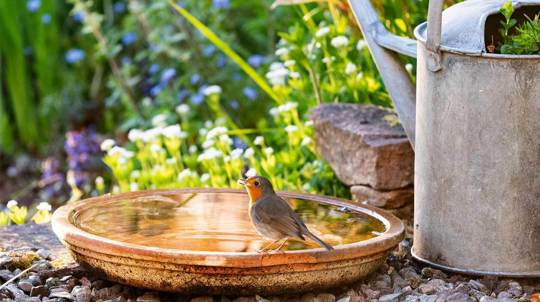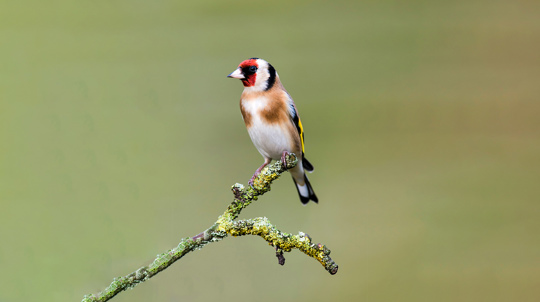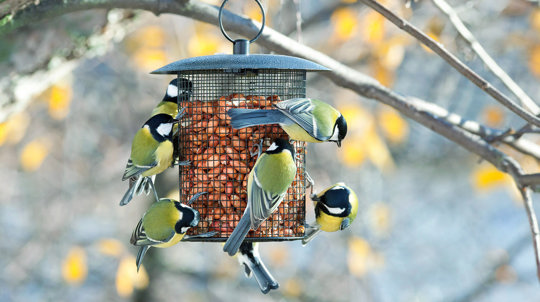Woodpeckers used to be entirely absent from Ireland, but small numbers of great spotted woodpeckers have begun to take up residence in recent years.
British woodpeckers: identification guide and calls

Content manager
Learn to tell the difference between Britain's three resident woodpecker species, plus a special guest, with our quick guide to their appearance, sounds and behaviour.
Green woodpecker (Picus viridis)
How to identify
Female
As the name suggests, green woodpeckers are predominantly mossy green with darker upper parts and a yellowy green rump that's conspicuous when in flight. They have a striking red cap and black mask with a prominent 'moustache'. The wing feathers are also barred black and white.
Male
Same colouration and patterning as the female, but with a red centre to the black moustache.
Juvenile
Youngsters have a more mottled appearance and lack the defined black facial markings.
Size
Our largest woodpecker. Wingspan up to 42cm across.
Best time to hear
Listen for their loud and strident laughing call, also known as a 'yaffle', often given when in flight. They tend to be most vocal in spring from late morning.
Where to find them
Can be found across much of England and Wales as well as parts of Scotland. Usually spotted feeding on the ground in grassy habitats where they probe for ants with their long tongues. Will sometimes visit garden lawns.
Call
Great spotted woodpecker (Dendrocopos major)
How to identify
Female
Great spotted woodpeckers have crisply defined areas of black and white plumage, including barring of the wing feathers and a black line beneath the eye which runs from the beak to the nape of the neck. Look for the long white 'shoulder' patches to help distinguish from the lesser spotted woodpecker (below), as well as the bright red area beneath the tail.
You might also be able to identify at a distance by their characteristic undulating flight. They appear to almost bounce in the air, with short wing beats propelling them up and forward, followed by periods of controlled falling.
Male
Same colouration and patterning as the female, but with a red patch at the back of the head.
Juvenile
Youngsters have a full red cap and paler red patch beneath the tail.
Size
Roughly the size of a thrush or starling and larger than the easily confused lesser spotted woodpecker. Wingspan up to 39cm across.
Best time to hear
These birds advertise breeding territories by drumming their beaks on trees. Listen for the sound echoing through woodland in early spring. They also produce sharp 'kik' calls, usually when alarmed and sometimes repeated in quick succession.
Where to find them
Common and widespread across England, Wales and most of Scotland. Found in woodland and a frequent visitor to garden feeders.
Call and drumming
Lesser spotted woodpecker (Dendrocopos minor)
How to identify
Female
Lesser spotted woodpeckers share some of the black and white features of their larger cousin which can make them look similar at first glance. To tell them apart, look for barring all the way across the back rather than the 'shoulder' patches of the great spotted. They also lack the red area beneath the tail.
Male
As the female but with a red crown.
Juvenile
Similar to females but with more of a dirty brown belly.
Size
Our smallest resident woodpecker, around the size of a sparrow or finch. Wingspan up to 27cm across.
Best time to hear
Listen for drumming in early spring. It is longer in duration but quieter than great spotted woodpeckers and sometimes broken into two parts. They also produce a soft 'kik' call.
Where to find them
Scarce and disappearing from much of their former range. Mostly found in mature woodland in the south east of England but with some small populations further north. Best looked for when feeding in the very tops of trees, especially in early spring before bud burst obscures the view.
Call and drumming
Wryneck (Jynx torquilla)
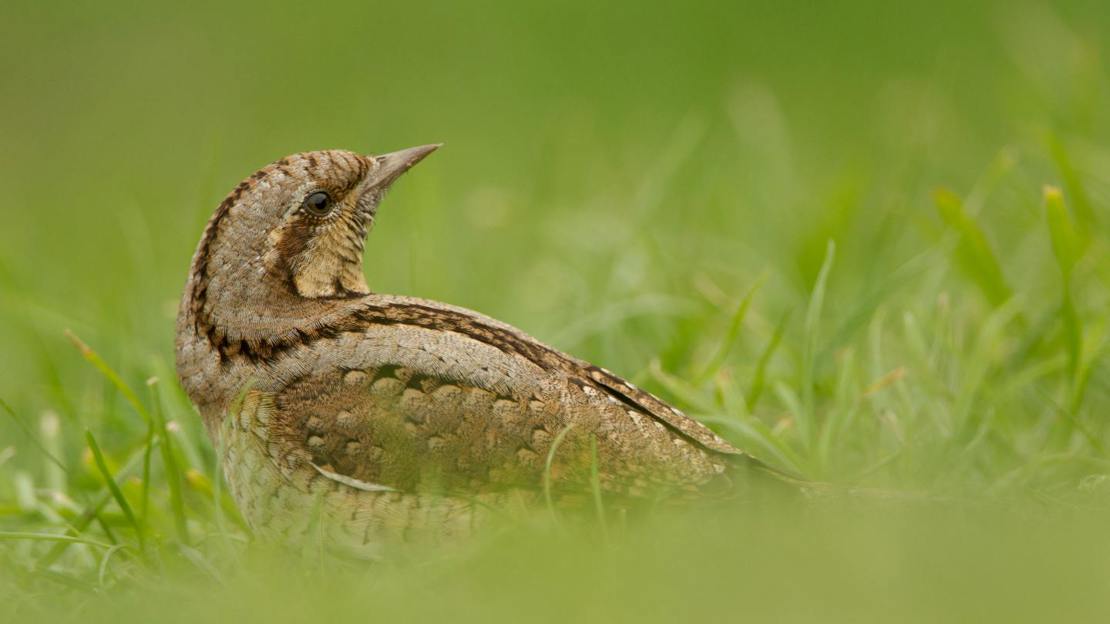
Wrynecks used to breed in Britain, but records dry up after the 1950s and they are no longer considered a resident species. It's thought their slow disappearance could be due to intensifying agriculture which has restricted their range to more favourable parts of Europe.
How to identify
These birds are masters of camouflage. Look for mottled brown and grey patterning with barred, buff brown underparts and a dark line running from behind the head down the back. It's not uncommon for juvenile starlings to be mistaken for wrynecks, although they are more uniformly brown all over.
Size
About the size of a sparrow. Wingspan up to 27cm across.
Best time to hear
You're unlikely to hear a wryneck in Britain. They are most vocal in spring when breeding on the continent; their call is a shrill, repeated 'quee-quee-quee-quee', with sometimes both males and females calling together.
Where to find them
A rare visitor most often encountered during migration in September and October when birds from Scandinavia head to Africa for the winter, although some are also recorded in spring. Mostly spotted along the south and eastern coasts of England as well as Orkney, Shetland and the Scilly Isles.
Call
Identify woodland birds on the go
Keep our pocket-sized identification guide to hand on your next walk.
Buy yours now





